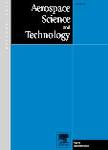版权所有:内蒙古大学图书馆 技术提供:维普资讯• 智图
内蒙古自治区呼和浩特市赛罕区大学西街235号 邮编: 010021

作者机构:Shandong Univ Dept Engn Mech Jinan 260062 Peoples R China Washington Univ Dept Mech Engn & Mat Sci St Louis MO 63130 USA
出 版 物:《AEROSPACE SCIENCE AND TECHNOLOGY》 (航宇科学与技术)
年 卷 期:2015年第45卷第Sep.期
页 面:449-461页
核心收录:
学科分类:08[工学] 0825[工学-航空宇航科学与技术]
主 题:Cooperative rendezvous Active-passive rendezvous Optimization control Particle swarm and differential evolution hybrid algorithm Sequential quadratic programming method
摘 要:In this study, the dynamics equation of orbital elements without singularities is used to describe the far-distance cooperative rendezvous of two spacecraft with different masses. The convergent costate vector is obtained using the particle swarm optimization with differential evolution (PSODE) hybrid algorithm to optimize the far-distance cooperative rendezvous process of the spacecraft. This vector is then used as the initial value for a sequential quadratic programming (SQP) algorithm to again optimize within a small range to obtain a convergent, stable solution. This study focuses on optimizing the control of the far-distance rapid cooperative rendezvous of spacecraft with different masses and explores the interactions between the magnitude of the thrust, the duration of the rendezvous, and the fuel consumption. Optimization simulation results indicate that when the rendezvous duration is limited to within a certain interval, the optimal process for the rendezvous of spacecraft with different masses is a cooperative manoeuvring type, and an increase in thrust will significantly save fuel. In the case of unrestricted rendezvous duration, as the thrust increases, the rendezvous time decreases, but there is little change in the total fuel consumption. (C) 2015 Elsevier Masson SAS. All rights reserved.